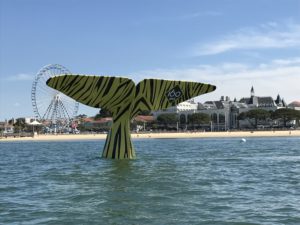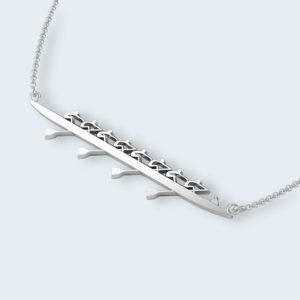Today we start a series of “Super Exercises” for rowing and sculling. These are among the most important drills that will help your crew acquire skills to move a rowing boat.
British Rowing Technique is set out in Rosie Mayglothling’s slides available free in our e books section on the Rowperfect shop. Download a copy for yourself.
This week we begin with the first one
Arms and Body Rowing
What is the Exercise For?
Teaching the end of the power phase and the finish including learning how the legs, back and arms contribute to creating an accelerated power phase.
How the rower does the exercise
There are three stages to this drill.
- Stage:Rowing with body swing only and straight arms and straight legs
- Stage:Rowing with body and arms and straight legs
- Stage:Rowing at half slide
The drill can be done either square blade or feathered – choose what suits your athletes’ skill and experience. You can do it whole crew or half sitting the boat level.
The drill should be done firm pressure. Allow enough strokes at each of the 3 stages to enable the athlete to feel their body movement and how it is contributing to boat speed before moving onto the next stage.
After completing the drill once, you can move the crew onto full slide, normal rowing / sculling. And then return to Stage 1 without stopping the boat (for experienced crews) or stop the boat to stationary before trying it again. Try to do the exercise at least twice for each athlete during one outing to get the most benefit.
Pointers for the Coach to check
- Do the athletes continue the Stage 1 back swing movement when they progress to Stage 2 and Stage 3? If they don’t do this, go back a stage and repeat the movement before advancing again to Stage 2 and Stage 3.
- At Stage 1, is the stern of the boat lifting out of the water a bit? Tell the crew to use their backs to lift the stern. See if that changes the stern height.
- Is there a strong rhythm to the Stage 1 and Stage 2 drill? This is created by having a ratio (contrast) between the power phase and the recovery phase, even though the stroke is short. Skilled athletes will be able to make the boat bounce in the water at stage 1.
- Are the athletes putting the oars into the water at the catch where they reach i.e. at the full stretch of their forward swing? If not, have them do the drill square blades and encourage them to raise the handle so the spoon gets closer to the water surface.
- Are the athletes all making the same movement at the same time? If not, get them to slow down and take fewer strokes per minute. If still challenged increase the load by getting half the crew to sit out so the loading on the athletes still rowing is hardened. Increasing the work load helps to make movements slower and more deliberate because they can’t move quickly due to the higher load.
- How large are the puddles at the point the oar comes out of the water? Do they get larger at stage 2 and stage 3 than stage 1? Larger puddles with a tight, white swirl at the centre shows that more power is being added to the stroke at each stage.
Extensions of the drill and related exercises
There are lots of ways to vary and extend the challenge to your crews with this exercise so that they always find a newly ‘difficult’ technique to practice. Even skilled athletes need new challenges so try out different ways of raising their game. Here are some we’ve tried
- Do arms and body rowing drill 20 strokes at each stage then go to 20 strokes firm at full slide. This incorporates the body movement of the drill into normal rowing.
- Check the boat speed using a speed meter or GPS. Tell the crew their speed and try to get them to beat it at each stage of the exercise.
- Do the full exercise twice round moving immediately back to stage 1 after stage 3. What do they athletes have to do differently to connect the oar with the water at stage 1 when the boat is already moving fast? How can they adapt their stroke to get locked on without compromising the body only movement? Get the crew to discuss the change and try different ideas they come up with.
- Increase the loading on the athlete – in sculling do the exercise holding the oar handles outside the rubber grips (down the shaft). In rowing, slide both hands together into the middle of the handle. Raising the load is like doing weights in the boat, by working a harder load you can strengthen the muscles.
- For sweep crews, try doing the exercise with the outside arm crossed over the inside arm. This isolates the lateral muscles in the back and can help the crew to identify when they are working those muscles so the can recruit them into the stroke and activate them to increase their power. Do the drill a second time with a normal grip and ask the athletes to activate their lateral muscles – get the same feeling they had with crossed arms.







